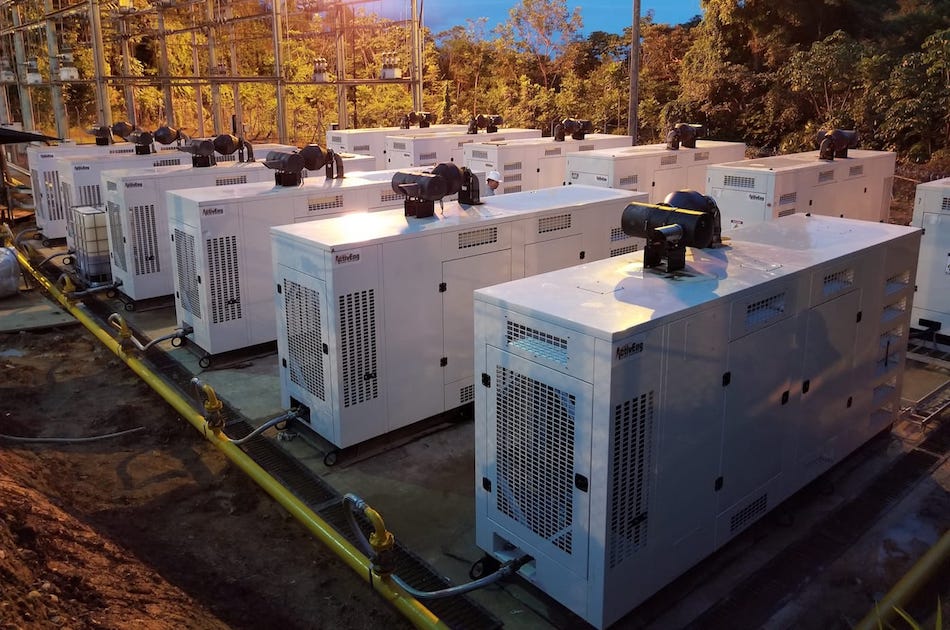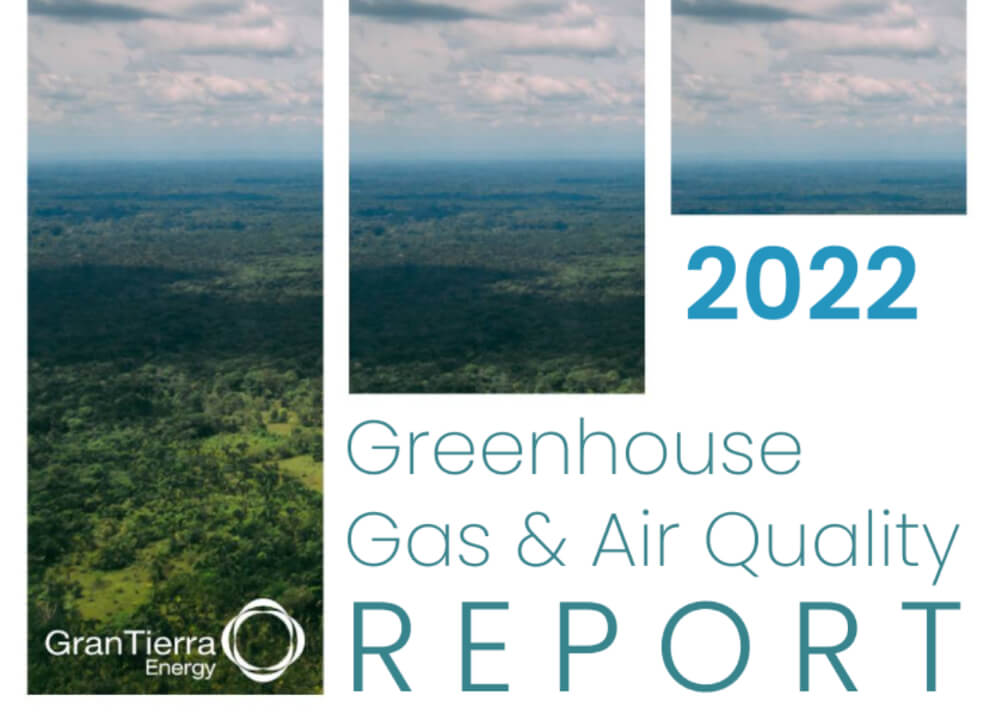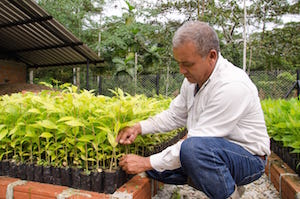Minimizing Emissions
Gran Tierra Energy is focused on emissions reductions in three key pillars: First through consistent, transparent and expanded reporting, secondly through our nature-based solutions and lastly, through Gas-to-Power projects. GTE also implements a Corporate Environmental Management Plan that addresses all aspects of environmental protection, including emissions, that guides our environmental policy.
Pillar 1: Transparent Reporting
Gran Tierra Energy’s environmental policy calls for the Company to track its greenhouse gas (GHG) emissions and take steps to reduce them wherever economically feasible.
Since 2016, Gran Tierra has voluntarily retained a respected expert in the field of air quality, to create an assessment of its greenhouse gas emissions in Colombia. This assessment involves collecting, analyzing and quantifying annual air emissions data from GTE’s operations. It was conducted according to the guidelines and standards adopted by the following organizations: International Petroleum Industry Environmental Conservation Association (IPIECA), International Association of Oil and Gas Producers (IOGP), American Petroleum Industry (API), U.S. Environmental Protection Agency (EPA), Canadian Association of Petroleum Producers (CAPP) and Intergovernmental Panel on Climate Change (IPCC). You can find our most recent report here.
An updated assessment using 2022 air emissions data will be released in 2023.
Pillar 2: Nature Based Solutions
Costayaco Forestry Centre: A Unique Resource for Reforestation
The Costayaco Forestry Centre (CFC), established by Gran Tierra Energy in coordination with the regional environmental regulator, and Corpoamazonia is one of the most innovative reforestation efforts in South America. The CFC contains 314.5 hectares of new and maturing forested areas, contributing to an important corridor that connects the Amazon rainforest to the nearby Andes Piedmont areas. These two ecosystems are some of the most biodiverse in the world.
In total GTE has planted approximately 1.47 million trees and has conserved, preserved, or reforested approximately 3,800 hectares of land through all of the Company’s environmental efforts since 2018. Careful management ensures that the once-delicate saplings grow into sturdy, mature trees that contribute to the national emissions reduction strategy goals.
Through the CFC, Gran Tierra has planted over 190,000 trees across the Putumayo and Cauca Departments, and over 63,000 trees have been donated to local communities and educational centres. The Centre also works to increase environmental awareness by providing educational opportunities for communities to learn about the importance of protecting the forests and environment.
Reforestation Project with Conservation International
Gran Tierra prioritizes the protection and conservation of the environment and works with organizations that share similar values. Gran Tierra, in partnership with respected International NGO Conservation International, has contributed USD $13 million over eight years to a major reforestation and conservation project that is contributing to the restoration and protection of the Andres-Amazon corridor, one of the most biodiverse regions in the world.
Given that nature-based approaches including conservation and restoration of tropical forests can provide 30% of the solution to climate change Gran Tierra believes that projects and partnerships such as this are contributing positively. It is expected that the actions developed by NaturAmazonas will contribute to reducing the rate of deforestation in the Amazonian foothills by at least 20%.
To read more about the NaturAmazonas project, click here.
Pillar 3: Gas-to-Power Reduces Emissions
Gran Tierra’s ongoing effort to reduce direct emissions by converting excess gas produced from its wells into an energy source for its operations, continues to generate results. Additionally, converting gas to electricity significantly reduces the demand on municipal utilities, increases fiscal resilience by lowering unit production costs, and provides a more stable energy supply, while reducing flaring and greenhouse gas emissions.
With all major fields fully converted, GTE has turned its attention towards generating gas power at its smaller locations, with service now in place at Cohembi and Los Angeles. The Company’s Gas-to-Power program has significantly reduced Scope 1 and 2 emissions over the last few years by cutting flaring, utilizing more produced natural gas for combustion, consuming less power from municipal sources and eliminating the need to purchase, transport and combust diesel. When excess power is produced, GTE can provide additional electricity to the local grid helping residents and stabilizing energy sources.

Reciprocating Gas Engine Generators at the Gran Tierra Moqueta Field
Electrical Power Use
In 2022, 69% of the total energy used in Gran Tierra’s total operations was generated through the Gas-to-Power projects. GTE’s energy consumption from the municipal grid has decreased by 50% since 2018. The Company continues to develop Gas-to-Power projects to decrease its use of electrical power from the local grid.
| FIELD | GAS-TO-POWER (kWh) | GAS USED (scf) | SAVINGS (USD)1 |
|---|---|---|---|
| COSTAYACO2 | 79,562,938 | 649,779,000 | $884,033 |
| MOQUETA3 | 219,785 | 2,716,740 | $28,377 |
| ACORDIONERO4 | 98,736,770 | 1,235,245,205 | $17,421,555 |
| MONO ARAÑA5 | 799,403 | 14,820,920 | $59,333 |
| VONU6 | 10,937,911 | 76,350,700 | $862,880 |
| LOS ANGELES7 | 374,004 | 6,962,115 | $37,224 |
| COHEMBI8 | 6,545,995 | 53,524 | $82,916 |
| JUGLAR9 | 197,473 | 2,853 | $9,830 |
1TRM=$USD 4,500.
2Savings calculated from gas generation Vs National Power Grid 402-352=50 COP/kWh (0,01111 USD/kWh).
3Savings calculated from gas generation cost 581 COP/kWh (0,1291).
In 2022, MQT G2P is exclusively used as generation support when occurs a failure in the national grid. For that reason there is not a cost associated to G2P.
4Savings calculated from gas generation Vs Diesel generation 942-148=794 COP/kWh (0, 1764 USD/kWh).
5Savings calculated from gas generation Vs Diesel generation 967-633=334 COP/kWh (0,0742USD/kWh).
6Savings calculated from gas generation Vs Diesel generation 757-402=355 COP/kWh (0,0789USD/kWh).
7Savings calculated from gas generation Vs Diesel generation 863-369=494 COP/kWh (0,1098USD/kWh).
8Savings calculated from gas generation Vs Diesel generation 869-812=57 COP/kWh (0,0012USD/kWh).
9Savings calculated from gas generation Vs National Power Grid 707-483=224 COP/kWh (0,0498USD/kWh).

